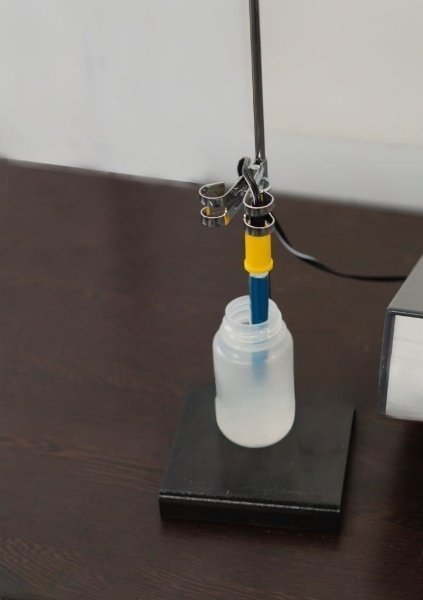Introduction of Viscosity Control
Mithila Paints has carved a distinctive niche in the world of paint manufacturing, embodying a rich tradition that dates back to its inception in the heartland of Mithila, India. This artisanal approach to paint production is deeply rooted in the local folk art, characterized by its vibrant colors and intricate designs. The company not only celebrates this heritage but integrates it into the essence of its products, aiming to provide customers with unique, high-quality paints that reflect the cultural richness of the region.
At the core of Mithila Paints’ operational philosophy lies a clear mission: to deliver superior quality paint solutions that enhance aesthetics while ensuring the durability of surfaces. The company recognizes that quality is paramount in the paint industry, where performance and longevity are critical factors influencing consumer choice. By meticulously controlling the viscosity of their paints, Mithila Paints ensures that each product meets stringent quality standards. This commitment to excellence not only sets the company apart from competitors but also fosters trust among its clientele.
The guiding values of Mithila Paints include innovation, sustainability, and customer satisfaction. By constantly experimenting with pigments and formulations, the company aims to stay ahead in a competitive market while minimizing environmental impact. Sustainability practices are woven into every step of the production process, ensuring that the paints are not only effective but also eco-friendly. Customer satisfaction remains at the forefront, as Mithila Paints maintains a responsive approach to engaging with clients, understanding their needs, and adapting solutions accordingly. This steadfast dedication to quality and service solidifies Mithila Paints’ reputation as a leading paint manufacturer committed to upholding both tradition and contemporary standards in the industry.
Understanding Viscosity in Paint
Viscosity is a fundamental property of fluids, including paint, defining the resistance of a liquid to flow. In the context of paint manufacturing, viscosity plays a pivotal role in determining the application, coverage, and finish of the paint. Understanding viscosity is essential for both manufacturers and consumers, as it affects not only the ease of application but also the end result in terms of texture and durability. Paints can be categorized based on their viscosity levels, which range from low to high. Low-viscosity paints flow more readily and are ideal for fine detailing or spray applications, while high-viscosity paints are thicker and best suited for textured finishes.
From a manufacturing perspective, controlling viscosity is vital for achieving optimal performance. Paint manufacturers often adjust the viscosity to meet specific requirements depending on the intended use of the product. For instance, a higher viscosity may be necessary for paints meant to cover imperfections on a surface, while a lower viscosity could be required for paints designed for a smooth, even application. Additionally, the viscosity of paint can be influenced by various factors, including temperature, the presence of additives, and the method of mixing.
Moreover, the impact of viscosity extends beyond application. It directly influences the leveling, sagging, and opacity of the paint once it is applied. A paint with inappropriate viscosity may not spread uniformly, leading to an uneven finish and requiring additional coats. Therefore, mastering viscosity control is crucial for manufacturers to ensure that their products deliver superior quality and performance. Ultimately, understanding and regulating viscosity is essential for achieving the desired characteristics in paint formulations, thereby enhancing user satisfaction and product efficacy.

The Role of Viscosity Control in Paint Manufacturing
Viscosity control plays a pivotal role in the paint manufacturing process, significantly influencing the quality and performance of the final product. Viscosity, which refers to the thickness or resistance to flow of a fluid, directly impacts various aspects of paint, including application, texture, and drying time. Achieving the right viscosity is crucial for ensuring uniformity and stability in paint formulations.
Consistent viscosity is essential for achieving homogeneity in paint products. When the viscosity is maintained within the desired range, it ensures that all constituents—such as pigments, resins, and solvents—are evenly dispersed throughout the mixture. This uniformity enhances the performance characteristics of the paint, contributing to better coverage, color accuracy, and overall aesthetic quality. On the contrary, excessive viscosity can lead to difficulties in application, such as brush or roller marks, while insufficient viscosity may result in runniness, uneven distribution, and ultimately poor finish.
Moreover, viscosity control directly correlates with the stability of paint products over time. Properly managed viscosity reduces the likelihood of settling or separation of components, which can compromise the integrity of the paint and necessitate re-mixing or reformulating. This not only affects the quality of the paint at the moment of application but also its longevity and durability once dried. Paint manufacturers often employ sophisticated viscosity control systems and measurement techniques, allowing for real-time monitoring and adjustments during production. These technological advancements are essential for ensuring that the final paint product meets the desired specifications and performance standards.
In essence, effective viscosity management is central to the manufacturing of high-quality paints. It ensures consistency, stability, and robustness of the paint, guaranteeing satisfaction for both manufacturers and end-users alike.

Mithila Paints’ Approach to Viscosity Control
At Mithila Paints, effective viscosity control is paramount in ensuring the superior quality of their products. The company employs a multifaceted approach that incorporates state-of-the-art techniques, advanced equipment, and precise measurement methods to achieve optimal viscosity levels throughout the production process.
One of the key elements in their viscosity control strategy is the utilization of modern mixing equipment. Mithila Paints invests in high-shear mixers, which provide improved dispersion of pigments and additives, contributing to a more uniform product consistency. This technology enables the company to achieve the desired viscosity by effectively breaking down particles, ensuring that they are evenly distributed throughout the paint. Moreover, the mixers are adjustable, allowing operators to fine-tune the viscosity based on specific formulations and requirements.
In addition to the mixing technology, Mithila Paints employs sophisticated viscosity measurement tools that monitor the viscosity in real-time. These instruments, such as viscometers and rheometers, provide precise data that enables quality control personnel to assess the paint’s flow behavior under various shear conditions. By closely tracking these measurements, the team can make immediate adjustments to the formulation or the mixing process, ensuring that viscosity remains consistent and within the specified range.
The integration of automated systems further enhances the viscosity control process at Mithila Paints. By utilizing computer-controlled mixing protocols, the company minimizes human errors and variability in viscosity. This automation not only streamlines production but also allows for better reproducibility of paint formulations, which is essential for maintaining product reliability.
Ultimately, Mithila Paints’ commitment to mastering viscosity control through advanced equipment, precise measurement techniques, and automated systems establishes them as a leader in producing high-quality paints that meet industry standards and customer expectations.
Challenges in Achieving Ideal Viscosity
Achieving the ideal viscosity in paint formulation is a complex process influenced by multiple factors. Key among these are temperature, humidity, and the variability of raw materials. Each of these factors can significantly affect the behavior and performance of the paint, presenting substantial challenges for manufacturers like Mithila Paints.
Temperature plays a crucial role in the viscosity of paint. As temperatures rise, paint typically becomes less viscous. Conversely, cooler temperatures can lead to an increase in viscosity, which may result in difficulties during application. This variation can lead to inconsistencies in the final product, making it essential for manufacturers to maintain strict temperature controls during both the production and storage phases.
Humidity is another significant factor influencing paint viscosity. Higher humidity levels can introduce moisture into the mix, affecting the drying process and altering the viscosity characteristics. Manufacturers must carefully monitor and adjust formulations to avoid impacts caused by fluctuations in humidity, which can lead to undesirable paint properties, such as poor adhesion or inadequate drying times.
Raw material variability poses an additional challenge in maintaining consistent viscosity. Differences in the quality and characteristics of pigments, binders, and solvents can lead to variations in the final product’s rheological properties. Mithila Paints addresses this challenge by rigorously selecting raw materials and implementing quality control measures at various stages of production. This ensures that each batch of paint retains the desired consistency and performance, thereby meeting industry standards.
By analyzing and mastering these challenges, Mithila Paints strives to produce superior quality paints that meet consumer expectations. Understanding and controlling viscosity is vital not only for the production process but also for the end-use performance of the paints, making it a focal point in paint manufacturing methodologies.
The Benefits of Proper Viscosity Control
Maintaining proper viscosity levels in paint products is essential for achieving superior quality and performance. One of the most significant advantages of effective viscosity control is the improvement in application properties. When paints are formulated with the right viscosity, they can be applied more smoothly and evenly. This helps to ensure that the paint adheres well to surfaces, provides an even coat, and reduces the likelihood of issues such as dripping or splattering. By optimizing the viscosity, manufacturers can also extend the pot life of the paint, allowing for more extended working times without compromising the finish.
Another crucial benefit of managing viscosity is enhanced durability. Paints with appropriate viscosity levels tend to form a more robust and resilient film upon drying. This translates into better resistance to environmental factors such as moisture, UV radiation, and temperature fluctuations. Proper viscosity control can lead to a longer-lasting finish that maintains its aesthetic appeal and functional integrity over time. As a result, end-users experience less wear and tear and can enjoy a more satisfactory product lifespan.
Furthermore, effective viscosity management contributes significantly to end-user satisfaction. Customers expect paint products to perform reliably and meet their specific needs. When viscosity is well-controlled, the final paint product exhibits optimal flow and coverage characteristics, making it easier and more enjoyable for users to work with. This means that consumers are less likely to encounter application-related frustrations, ultimately leading to higher levels of satisfaction and loyalty towards brands like Mithila Paints, which prioritize quality in their formulations.
In summary, proper viscosity control is not merely a technical requirement but a foundational aspect that enhances application properties, durability, and user satisfaction in paint products. Mithila Paints effectively employs viscosity management to ensure their products truly meet the expectations of consumers.
Innovations in Viscosity Management
In the realm of paint manufacturing, viscosity control plays a pivotal role in determining product quality and performance. Mithila Paints has made significant strides in integrating innovative technologies to enhance viscosity management processes. These advancements not only ensure a superior quality product but also streamline production efficiency. One of the key innovations is the adoption of microfluidic technology. This enables precise measurement and adjustment of the paint’s viscosity during the production phase, allowing for real-time control that leads to a more consistent end product.
Additionally, Mithila Paints has turned to smart sensors that continuously monitor viscosity levels throughout the manufacturing process. By utilizing Internet of Things (IoT) connectivity, the company can collect data and adjust formulations instantaneously. This level of responsiveness minimizes waste and reduces the time needed for manual adjustments, thereby increasing overall operational efficiency. Furthermore, the use of artificial intelligence and machine learning algorithms in viscosity prediction and control has enabled Mithila Paints to stay ahead of industry trends. These technologies analyze previous batches and market feedback to optimize formulations for future production runs.
Mithila Paints also places a strong emphasis on sustainable practices within viscosity management. The company is actively researching biodegradable additives that can help control viscosity without compromising environmental integrity. This dual focus on innovation and sustainability not only sets Mithila Paints apart from competitors but also meets the growing consumer demand for eco-friendly products. Continuous investment in research and development has allowed the organization to adapt rapidly to market shifts while maintaining a commitment to high-quality standards.
In conclusion, Mithila Paints exemplifies how embracing technological advancements and sustainable practices in viscosity management can lead to superior product quality and production efficiency. The integration of these innovations marks a crucial step in the evolution of the paint manufacturing industry, positioning the company as a leader in the competitive landscape.

Customer Testimonials and Success Stories
At Mithila Paints, customer satisfaction is paramount, and numerous clients have shared their positive experiences with our high-quality paints, particularly noting the impact of our viscosity control. Our innovative approach towards managing the viscosity of our products has allowed us to consistently meet and exceed customer expectations across various projects.
One such testimonial comes from a prominent local artist, Priya Sharma, who recently completed a mural project for a community center. Priya expressed her admiration for the smooth application and vibrant colors of Mithila Paints. She remarked, “The viscosity of the paints allowed me to achieve intricate details without tedious effort. The consistency was perfect for the nuances I wanted to achieve in the mural, and the final outcome exceeded my expectations!” This success has motivated Priya to recommend Mithila Paints to her fellow artists, showcasing how effective viscosity control enhances creative freedom.
Another notable success story is that of Rajan Construction, a leading contractor specializing in residential designs. The project manager, Anil Mehta, shared his experience using Mithila Paints for a high-end villa project. “We were faced with tight timelines and specific aesthetic requirements,” he stated. “Thanks to the superior viscosity control of Mithila Paints, our team was able to apply multiple layers quickly and efficiently, achieving a flawless finish that impressed both our clients and stakeholders.” This successful application demonstrates how our products cater to the unique demands of diverse projects.
These testimonials underscore the reliability and effectiveness of Mithila Paints, affirming how our dedication to mastering viscosity control translates into customer success stories. Clients from various fields continue to report their satisfaction, reinforcing our commitment to delivering superior quality paint solutions tailored to their specific needs.
Conclusion and Future Outlook
In summation, the meticulous approach that Mithila Paints has adopted toward viscosity control illustrates a significant commitment to quality and innovation in the paint industry. Throughout this discussion, we have explored the essential role that viscosity plays in determining the performance characteristics of paints. By honing their mastery of viscosity management, Mithila Paints ensures that their products meet the highest standards expected by consumers and industry professionals alike.
As we look to the future, the importance of ongoing research and development in viscosity control cannot be overstated. Technological advancements in formulation and application techniques are paving the way for more innovative products that enhance the usability and effectiveness of paints. Mithila Paints, with its dedication to quality, is poised to lead the industry by integrating these advancements into its product lines.
Furthermore, the focus on sustainable practices within viscosity management also reflects a larger trend within the paint industry. As environmental considerations become increasingly prevalent, Mithila Paints is committed to developing eco-friendly formulations that do not compromise on performance or quality. This forward-thinking approach is not only advantageous for the environment but is also a response to consumer demands for greener products.
The future of viscosity control in the paint industry appears promising, particularly for brands like Mithila Paints that are firmly rooted in innovation and quality. As the company continues its journey, it is likely to explore new materials, methodologies, and technologies that contribute to superior quality outcomes. Maintaining a balance between performance and sustainability will be crucial, and Mithila Paints is well-prepared to navigate these challenges while remaining at the forefront of the industry.


